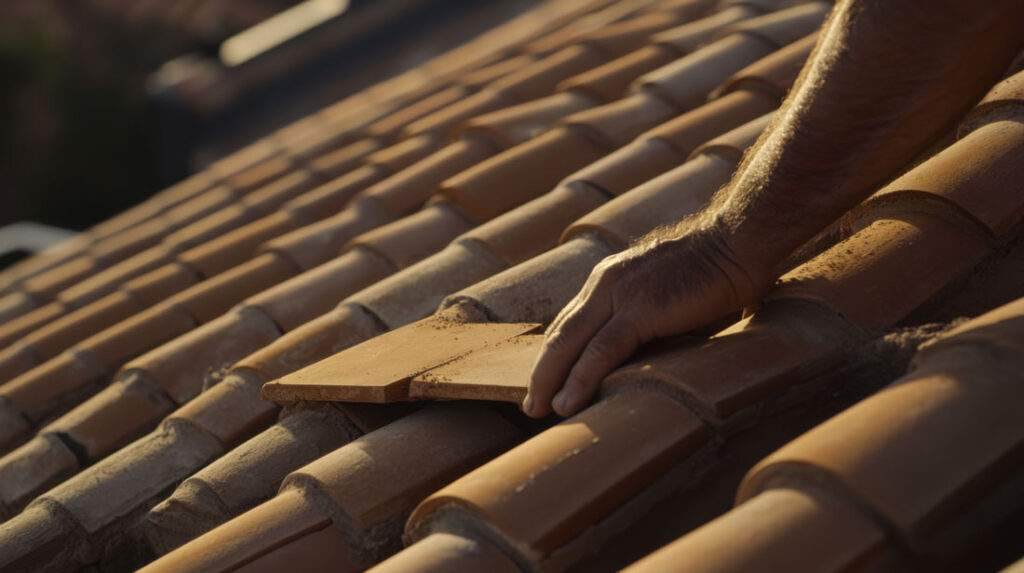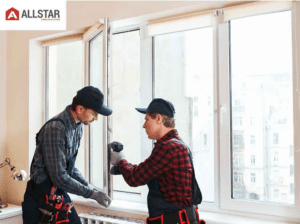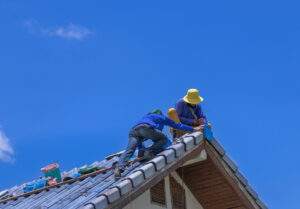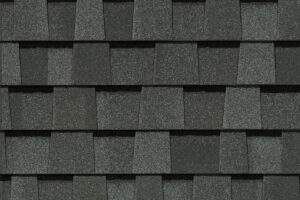Your roof stands as your home’s first line of defense against North Dakota and Minnesota’s harsh weather. From winter’s freeze-thaw cycles to summer hailstorms, it takes a beating year after year. But how do you know when it’s time to stop patching and start planning a full replacement? Spotting the signs your roof needs replacing can save you from bigger problems—and higher costs—down the road.
In this guide, Allstar Construction shares the crucial clues that your roof might be nearing the end of its lifespan, helping homeowners across Fargo, Moorhead, and surrounding communities protect what matters most.
Key Takeaways
- Curling, cracked, or missing shingles often signal the need for a roof replacement.
- Frequent leaks or water stains inside your home are major red flags.
- Roofs over 20 years old may no longer offer reliable protection in Midwest climates.
- Granule loss from asphalt shingles is an early warning of roof deterioration.
- Hiring a roof inspector is essential for an accurate assessment of your roof’s condition.
Why Recognizing Roof Warning Signs Matters
Your home’s roof is more than just a covering—it’s your first defense against wind, rain, and the harsh elements that North Dakota and Minnesota are known for. Recognizing the warning signs that your roof needs to be replaced is essential for every homeowner. Ignoring these signs can lead to major issues, including water damage, structural damage, and even the risk of collapse. Regular roof inspection and timely repairs can help you catch problems like missing shingles, curled shingles, or leaks before they escalate into expensive repairs or threaten your safety. By staying alert to the common signs that your roof needs attention, and by working with a trusted roofing contractor, you can ensure your house remains protected and avoid the stress of emergency roof replacement. In this article, we’ll guide you through the key indicators that your roof needs to be replaced and explain why professional help is crucial for lasting results.
1. Shingles Are Curling, Cracking, or Missing
In our region’s extreme weather, shingles can take a real beating. Over time, you might notice edges curling upwards or even cracking apart. In many Fargo-area homes, this happens when shingles have reached the end of their service life, typically around 20-25 years for asphalt products. Missing shingles leave bare patches vulnerable to water infiltration, which is a clear sign your roof might need replacing sooner rather than later. If you notice that many shingles are missing, this is a strong indicator that a full roof replacement may be necessary.
2. You’re Finding Granules in Gutters or Around Your Home
Asphalt shingles are coated in protective granules that help shield your roof from UV rays and harsh weather. But when those granules start collecting in your gutters or washing onto the ground after storms, it’s a warning sign of significant wear. These granules are made of crushed stone, and their accumulation in gutters is a clear indicator that your shingles are aging or deteriorating. Granule loss leaves shingles more exposed to sunlight, speeding up aging and reducing your roof’s effectiveness against water damage.
Learn about our storm damage services.
3. Water Stains or Leaks Inside Your Home
If you’re noticing brown spots on your ceiling or damp patches along your walls, a roof leak may be the cause, indicating your roof is failing to keep moisture out. Leaks can come from worn-out flashing, compromised shingles, or hidden structural damage. Even a small leak can lead to significant damage if not addressed promptly. In North Dakota and Minnesota, where ice dams are a common winter hazard, interior leaks might also result from melting snow backing up under roofing materials. Either way, repeated leaking or signs of a roof leak signal it’s time for a professional assessment, and leaking roofs should be inspected and repaired immediately to prevent further issues.
Schedule your free roof inspection.
4. Your Roof Is Sagging
A sagging roof is never normal. It often indicates severe structural issues, such as water-saturated decking or damaged rafters. Damage to the roof deck—the foundational layer beneath the shingles—can also cause sagging, as it loses its strength and stability when compromised. In the Upper Midwest, heavy snow accumulation or ice dams can add dangerous weight, leading to deformation or even collapse if left unaddressed. If you see dips, waves, or low spots along your roofline, call an expert immediately—it’s likely time for a replacement.
5. Your Roof Is Over 20 Years Old
Roofs don’t last forever. The roof’s age is a critical factor in determining when replacement is necessary, as it directly impacts the roof’s condition and potential insurance considerations. Asphalt shingles, the most common material used across Fargo and Minnesota homes, typically last 20 to 25 years. Even if your roof looks intact from the ground, hidden wear and aging can leave it vulnerable to leaks and storm damage. A roof over two decades old should be thoroughly evaluated to ensure it’s still providing solid protection.
6. Moss, Mold, or Algae Growth
Moss or dark streaks on your roof are showing signs of trapped moisture and potential roof problems—a condition that leads to shingle deterioration. Fargo’s humid summers and wet springs can accelerate this problem. Left unchecked, organic growth can lift shingles and allow water to seep underneath, potentially shortening your roof’s lifespan.
7. Rising Energy Bills
An aging or damaged roof can compromise your home’s insulation, leading to higher heating and cooling costs. Warm or cool air escaping through gaps or degraded materials forces your HVAC system to work overtime. Damage to other elements of the roofing system, such as vents or soffits, can also contribute to energy loss and reduced efficiency. Homeowners in North Dakota and Minnesota often notice this problem during our extreme seasons, when efficient roofing is crucial for comfort and savings.
Neighborhood Trends: Are Other Homes Getting New Roofs?
Sometimes, the best clue that your roof needs to be replaced is right outside your window. If you notice that several homes in your neighborhood are getting new roofs, it could be a sign that your own roof is nearing the end of its useful life—especially if the houses were built around the same time and have faced the same weather conditions. New roofs popping up on your street often mean that the original roofing materials are reaching their limit, and your roof may soon need to be replaced as well. Pay attention to signs like missing shingles or frequent repairs on nearby homes, as these can indicate widespread issues in your area. By staying aware of neighborhood trends, you can plan ahead for your own roof replacement and avoid being caught off guard by leaks or other roof needs.
Environmental Factors: Weather and Surroundings That Impact Your Roof
The environment around your home plays a major role in how long your roof lasts. In our region, severe weather like heavy rain, hail, and strong winds can cause significant roof damage, leading to missing shingles, leaks, and the need for repairs. Overhanging trees can drop leaves and branches onto your roof, clogging gutters and causing water to pool, which increases the risk of leaks and shingle deterioration. Even the sun’s powerful UV rays can break down asphalt shingles over time, resulting in curled or cracked shingles that need to be replaced. Regularly clearing your gutters and trimming back vegetation can help protect your roof, but it’s also important to schedule routine inspections to catch any weather-related damage early. By understanding how your surroundings impact your roof, you can take steps to extend its life and prevent costly repairs.
The Importance of Regular Roof Inspection and Maintenance
Routine roof inspection and maintenance are key to keeping your roof in top shape and avoiding unexpected repairs. A professional roofing contractor can thoroughly inspect your roof for signs of trouble, such as missing shingles, curled or cracked shingles, loose granules, rotting boards, or improper installation. They’ll also look for early signs of moss growth, algae growth, and structural damage that could compromise your roof’s integrity. By having your roof inspected at least twice a year—and after any major storms—you can catch small issues before they turn into major leaks or require a full replacement. Regular maintenance not only helps you spot problems like leaks or damaged shingles, but also ensures your roof continues to protect your home for years to come. Don’t wait for visible damage; make roof inspection a regular part of your home care routine to safeguard your investment.
FAQs: Signs You Need a New Roof
How often should I inspect my roof? It’s wise to inspect your roof visually each season and schedule a professional inspection at least once every two years, or after significant storms.
What should I look for during a roof inspection? Check your attic for signs of daylight coming through the roof boards, which can indicate leaks or structural issues. It’s important to have your roof checked by a professional for damage, especially after storms. Inspect the attic for moisture, and look for any visible damage or sagging in the roof’s structure.
Can I replace just a few shingles instead of the whole roof? Spot roof repair can help in isolated cases, and some shingles can be repaired if the damage is minor. However, if you notice widespread issues like aging, missing granules, curling shingle tabs, or multiple leaks, it may be time to replace your roof with an entirely new roof. While a repair might last a few years, extensive damage or structural problems often mean a full replacement is the smarter long-term investment.
Does homeowners insurance cover roof replacement? It depends on your policy and the cause of the damage. Storm or hail damage is often covered, but normal wear and tear typically isn’t. If your home’s roof is damaged by a covered event, you may be eligible to file an insurance claim. Your insurance company or home insurance company will assess the roof’s condition and determine coverage. Keep in mind that prior claims or poor roof condition can affect your ability to get coverage or have a claim approved.
How long does a roof replacement take? Most residential roof replacements are completed in two to three days, depending on size, weather conditions, and material choice.
What roofing materials last longest in Fargo’s climate? CertainTeed asphalt shingles, metal roof options, and tile roof materials are all excellent choices, offering durability and protection against severe weather common in North Dakota and Minnesota. Fiberglass shingles are also popular for their water resistance and longevity, especially compared to organic shingles. Tile roofs require less frequent inspections, while metal roofs are known for their longevity and low maintenance.
What are the signs my roof needs attention?Look for clogged or damaged gutters, missing granules on asphalt roof shingles, curling or cupped shingle tabs, and visible wear on the roof’s surface. These are all indicators that your roof may need repair or replacement.
How long will repairs last, and what do most homeowners choose? Most homeowners prefer durable roofing materials like fiberglass shingles or metal roofs for longevity. Patch repairs using certain shingles may last only a few years before further issues arise, so timely inspections and choosing the right material are important.
How long does a home’s roof last, and when should I replace it? The lifespan of your home’s roof depends on the roofing material used and the roof’s maintenance history. Asphalt roofs typically last 15-30 years, while metal and tile roofs can last much longer. If your roof is nearing the end of its expected lifespan or shows significant damage, it may be time to replace your roof to maintain your home’s value and safety.
Ready for Peace of Mind?
If you’ve spotted any of these signs your roof needs replacing, don’t wait until it’s time to replace your roof due to severe problems—address issues early to avoid bigger headaches. Don’t wait for leaks or costly repairs to escalate. Allstar Construction offers free roof inspections, transparent estimates, and roofing solutions designed to withstand our region’s toughest weather. Let’s help you protect your home for years to come.





